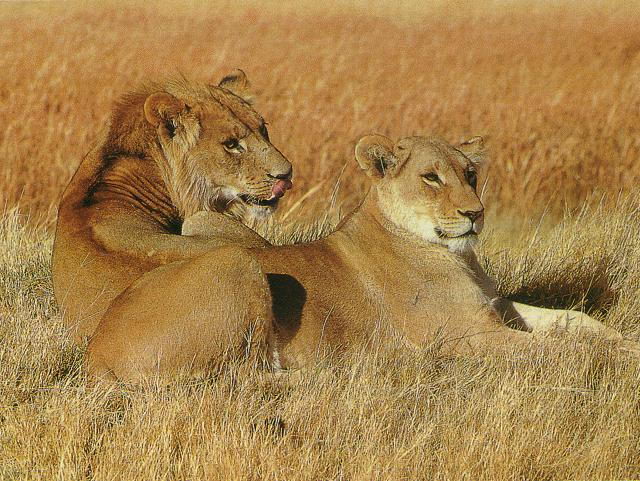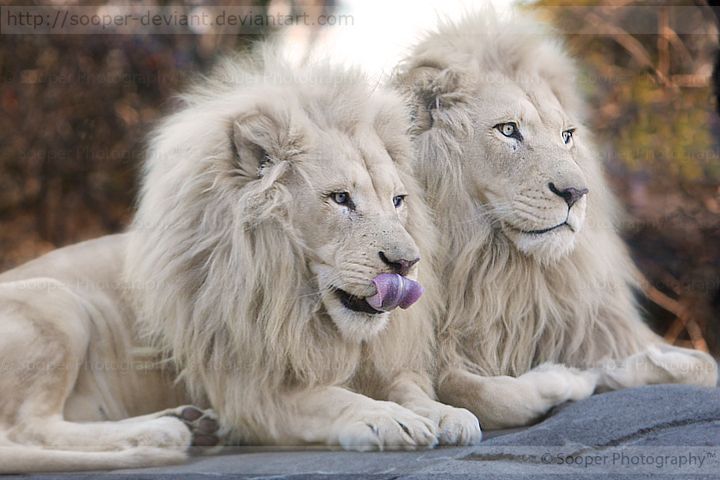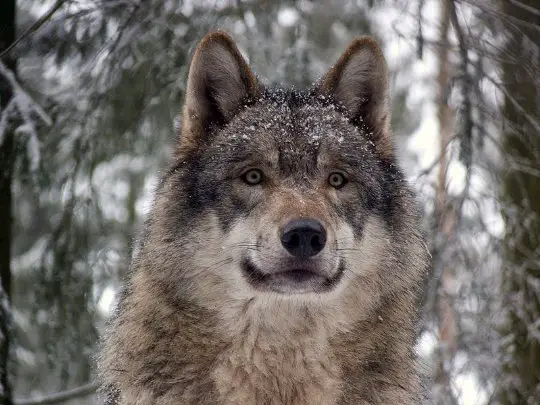Due to their peculiar appearance and ferocious nature, the information about lions has long been the center of attention for children. With a yellowish-brown fleece, white shade at the bottom and an extended tail that is dark at the end, lion is definitely a ruthless predator that doesn’t let off any intruder to break in his territory. Apart from living in barren regions and tropical rain forests, lions typically reside in savanna locale or grasslands and they are also well-suited to the woodland rugged regions of great heights like Bale Mountains in Ethiopia which is probably located at 4,240 meters above the ground. Furthermore, there are brown marks all over the smoky-colored cubs before they reach 3 months. When comparing the two lions, African lions are relatively bigger than Asiatic lions and the difference between the two is obviously due to their genetic cells.
Just check out the most interesting information about lions and enjoy reading it.
Most Interesting Information About Lions | Top 20 Facts About Lions
- Unlike other wild cats, lions fancy living in groups and so they are really sociable.
- A group of tigers is known as pride (which normally comprises of 40 individuals) and a female lion is normally in charge of this group.
- Almost 60% to 70% of cubs expire even before reaching one year after their birth.
- In a pride, male lions inhabit for just about 3 years.
- By urinating in a specific area along with a loud roar, male and female lions both make out their respective territories.

- While lions are extremely aggressive and unforgiving mammals when it comes to food, they are equally loving and frisky in times of having a rest. This rest can prolong for about 15 to 20 hours per day.
- After every 2 years, a female lion produces offspring and the mother keeps on nurturing her kids for about 6 months.
- One of the more useful information about lions is that there was a time when lions were completely wiped out from South Africa. Instead they resided in Kalahari Gemsbok National Parks and Kruger.
- Lion certainly holds the second position after spotted hyenas when it comes to big hunters of the wild.
- The biggest lion ever documented is believed to be almost 11 feet in length, carrying a weight of about 700 pounds.
- The maximum number of years a lion has ever lived is 29 years.
- The range of vision of a lion is 5 times greater than us.
- After tigers, lions are the next biggest wild cats in the world.
- Lions are capable to pay attention to their targets even from 1.6 kilometers.
- When a lion roars, you can listen to his thundering sound from even 5 miles.
- As a male lion shows up in a pride, it bumps off the cubs already present there.
- Lions can survive for 4 days even without water.
- There are almost 40,000 to 50,000 lions left behind.
- Lions are quite lethargic animals and are on the go for just 2 to 4 hours in a day.
- Within the last 20 years, almost 30 to 50 per cent lions have completely wiped out and thus their population is shrinking at a staggering rate.
A Quick Guide To Information About Lions
Scientific Name: Panthera leo
Family: Felidae
Kingdom: Animalia
Phylum: Chordata
Class: Mammalia
Order: Carnivora
Weight: 150 – 250 kilograms (Males), 120 – 182 kilograms (Females)
Length: 8 feet – 2 inches (Males), 5 feet – 9 inches (Females)
Number of Subspecies: 12
Average Life span: 10 – 14 years (Wild), 20 years (Captivity)
Status: Vulnerable
Predators: Humans and diseases
Diet: Springbok giraffes, kudu, wildebeest, wild, boar, gemsbok, species of deer, eland, Thomson’s gazelle, zebras, warthogs, cape buffaloes and impalas.
Maximum Speed: 50 mph
Learn more:








